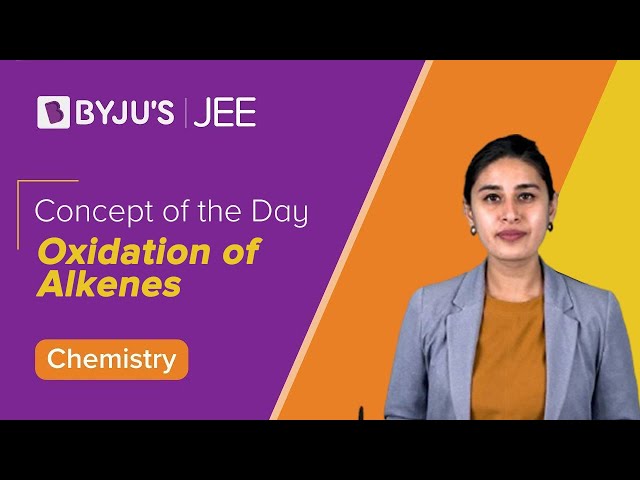Introduction
The Hydroboration Oxidation reaction is an organic chemical reaction which is employed for the conversion of alkenes into alcohols that are neutral. This is done via a two-step process which includes a hydroboration step and an oxidation step. This is done by a net addition (across the entire double bond) of water.
The hydroboration oxidation reaction mechanism can be considered as an anti-Markovnikov reaction where a hydroxyl group attaches itself to the carbon which is less substituted. The first time the Hydroboration oxidation reaction was reported was in the second half of the 1950s by the English born American chemist Herbert Charles Brown. He went on to win the Nobel Prize in Chemistry in the year 1979 for this work.
Given below is the hydroboration reaction in its general form.

Here, THF is used as an abbreviation for tetrahydrofuran, which is the commonly used solvent in the hydroboration step.
Table of Contents
- Mechanism for Hydroboration Oxidation of Alkenes
- The Hydroboration Step
- The Oxidation Step
- Mechanism for Hydroboration Oxidation of Alkynes
Mechanism for Hydroboration Oxidation of Alkenes
Here, the conversion of alkenes into alcohols of a neutral nature takes place. The entirety of the reaction can be simplified down into two steps as explained below.
The Hydroboration Step
This step begins with the addition of borane in the form of BH3 to the given double bond. This leads to the transfer of a hydrogen atom to the carbon atom that is adjacent to the carbon bonded with the boron atom. The hydroboration step described is now repeated twice, giving three alkenes that are attached to the boron atom from the initial BH3.
The compound that results from the addition of three alkenes to the borane is referred to as trialkyl borane. This trialkyl borane is now treated with a base (or water) and hydrogen peroxide. Thus, the boron-carbon bonds are replaced with carbon-OH group bonds. The conversion of boron into boric acid is also observed. 1-hexene can be converted into 1-hexanol using this method as shown below.

It can be noted that the BH2 continues adding itself to alkene groups until all the hydrogen atoms are transferred to the alkenes and there are no more hydrogens bonded with the boron atom. Therefore, a single mole of hydroborane can undergo a reaction with alkenes in a quantity of three moles.
The Oxidation Step
Now that the trialkyl borane is generated, the second step of the hydroboration process can be executed. In this step, the boron atom comes under attack by the hydroperoxide ion which is nucleophilic in nature. Now, the R group is rearranged along with its bond pair of electrons to the adjacent oxygen atom.
The hydroxide ion is now removed. This process happens thrice to give a trialkyl borate as the product. This trialkyl borate is now subjected to water to yield the required neutral alcohol as a product. This step of the mechanism can be illustrated as follows.
 Mechanism for Hydroboration Oxidation of Alkynes
Mechanism for Hydroboration Oxidation of Alkynes
The terminal alkynes can also undergo hydroboration. This proceeds in an anti-Markovnikov way as well. The less substituted carbon which is also least hindered becomes a priority target for the attack of the boron atom. To stop the reaction at the alkenyl group attached borane stage, a bulky reagent of borane must be used. If borane is used by itself, it would result in the hydroboration of both the pi bonds of the alkyne.
The oxidation step of this process begins with the oxidisation of the alkyl borane into vinyl alcohol that has an alkene group as well as an OH group. This oxidation occurs due to hydroxide reactions in the basic solution. This alcohol now undergoes tautomerization to yield a stable aldehyde form. An example of the hydroboration reaction of a terminal alkyne is provided below.

The hydroboration-oxidation reaction in organic chemistry is a two-stage hydration reaction that transforms an alkene into alcohol. Thus, alkenes are converted into neutral alcohols and alkynes are converted into aldehydes using the hydroboration method.
Learn more about chemical reaction and the mechanism by downloading BYJU’S – the learning app.
Oxidation of Alkenes – Video Lesson


Comments